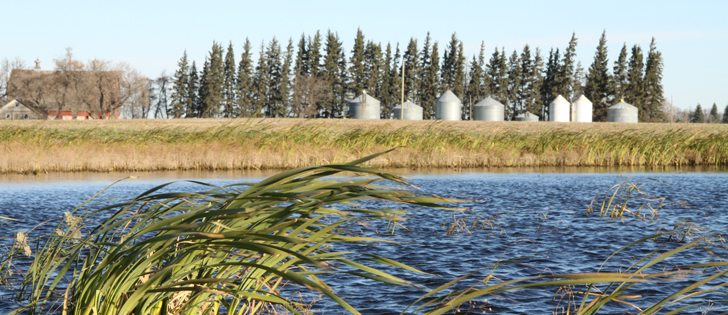It’s a cocktail napkin calculation, but implementing an Alternative Land Use Service program in Manitoba could cost $25 to $30 million a year.
The new Progressive Conservative government has committed to a province-wide ALUS type program, in which landowners are paid to retain or re-construct natural areas such as wetlands, grasslands and riparian areas near rivers. The payments compensate landowners for critical ecosystem services, such as wildlife habitat, carbon sequestration, flood mitigation and preserving water quality.
A number of municipalities in Canada have ALUS projects, but Prince Edward Island is the only jurisdiction with a province-wide ALUS program.
Read Also

Farming Smarter receives financial boost from Alberta government for potato research
Farming Smarter near Lethbridge got a boost to its research equipment, thanks to the Alberta government’s increase in funding for research associations.
“They (P.E.I.) have got 97 percent of farmers participating and (the) budget is a million a year,” said Lara Ellis, an ecosystem markets, business and policy development director with ALUS Canada who spoke at a Keystone Agricultural Producers meeting in Brandon July 12.
P.E.I. has 620,000 acres of farmland, including 423,000 of cropland, according to the federal Census of Agriculture for 2006, while Manitoba has 19.1 million acres of farmland, including 11.6 million acres of cropland.
This means that Manitoba has 30 times more farmland than P.E.I. and 27 times more cropland than P.E.I.
As a result, a province-wide ALUS program in Manitoba may cost $27 to $30 million in annual payments to farmers if ALUS is as popular with Manitoba farmers as it is in P.E.I. and has similar payments for ecosystem services.
Scott Stephens, Ducks Unlimited Canada’s director of regional operations for the Prairies, has said that financial payments to preserve wetlands may cost $30 million in Manitoba.
“I’m not sure how that math works out,” he said.
“I know there are a heck of a lot of basins across the province. That would mean pretty small payments for each basin.”
The program’s annual cost may be lower if a percentage of Manitoba farmers don’t participate or if the province imposes a financial cap.
Private funders and financial support from other sources may also reduce the annual cost.
“It’s our goal that this program be funded through a large spectrum of sources … a combination of government, corporate, individuals and also new markets (such as species at risk habitat),” Ellis said.
“(But) my understanding is that a large ticket ALUS program would not be affordable right now in Manitoba.”
The federal and provincial governments are the primary funders of ALUS In P.E.I.
Stephens said payments to landowners are useful, but regulations are also needed to preserve wetlands, grasslands and the broader ecosystem.
“That combination (regulations and payments) is where we’ll see the most effective solutions and progress made, he said.
“Either one on its own, only incentives or only regulations, won’t be as effective, in our opinion.”
Ellis agreed that ALUS is not a replacement for environmental regulations.
“It’s not an either/or, (but we have to look at who is bearing the cost for environmental protection,” she said.
“It’s our position that if we’re asking people to restore features, that they be compensated for that.”
Many Manitoba farmers felt that the former NDP government strangled the agricultural industry with excessive and unnecessary regulations, so a shift toward financial incentives in environmental programs is welcome.
However, that doesn’t mean the province should abandon environmental regulations, said Dan Mazier, president of Keystone Agricultural Producers.
“We’ve got some good regulations, and we all realize we need regulation in certain things,” Mazier said.
“There need to be rules.”
ALUS payments in Prince Edward Island:
- Land retirement expanded buffer zone: $75 per acre per year
- Land retirement high sloped land: $60 per acre per year
- Land retirement grassed headlands: $75 per acre per year
- Buffer zone tree planting: $75 per acre per year
- Maintaining livestock fences by water: 30 cents per metre per year
Source: Government of Prince Edward Island
Contact robert.arnason@producer.com


















